Plextor M5 Pro (256GB) Review
by Kristian Vättö on August 31, 2012 11:32 AM ESTRandom Read/Write Speed
The four corners of SSD performance are as follows: random read, random write, sequential read and sequential write speed. Random accesses are generally small in size, while sequential accesses tend to be larger and thus we have the four Iometer tests we use in all of our reviews. Our first test writes 4KB in a completely random pattern over an 8GB space of the drive to simulate the sort of random access that you'd see on an OS drive (even this is more stressful than a normal desktop user would see).
We perform three concurrent IOs and run the test for 3 minutes. The results reported are in average MB/s over the entire time. We use both standard pseudo randomly generated data for each write as well as fully random data to show you both the maximum and minimum performance offered by SandForce based drives in these tests. The average performance of SF drives will likely be somewhere in between the two values for each drive you see in the graphs. For an understanding of why this matters, read our original SandForce article.
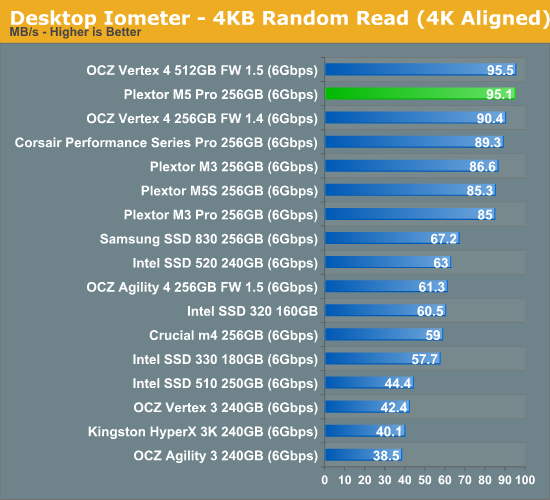
Random read performance is excellent. The M3/Pro already had great random read performance to begin with but M5 Pro takes that one step further. We are looking at figures similar to Vertex 4 here.
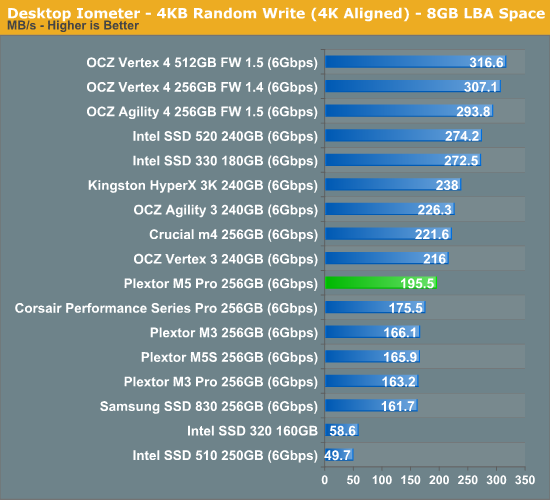
At queue depth of 3, the M5 Pro is noticeably faster than its predecessors. The difference is 30MB/s (~18% on average), although Plextor still cannot match the performance of SandForce or Indilinx Everest 2.
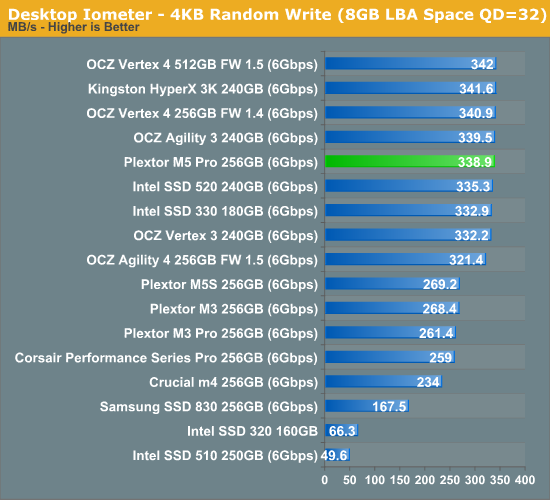
Increasing the queue depth to 32 yields great results. Performance has significantly improved since the M3/Pro. The M5 Pro is on par with SandForce and Everest 2 based SSDs here.
Sequential Read/Write Speed
To measure sequential performance we ran a one minute long 128KB sequential test over the entire span of the drive at a queue depth of 1. The results reported are in average MB/s over the entire test length.
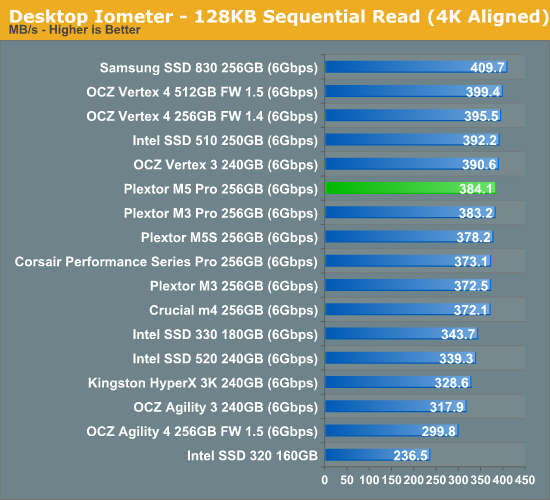
Sequential read performance remains unchanged from M3 Pro.
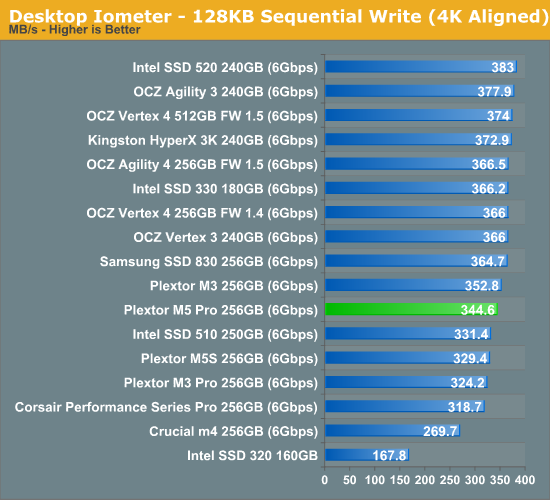
Sequential write is up when compared to M3 Pro, but for some reason, the M3 is still even faster than the M5 Pro.










37 Comments
View All Comments
TemjinGold - Friday, August 31, 2012 - link
Was looking forward to this drive beating the Vertex 4 but not only does it not do that, it also costs a ridiculous amount...scottwilkins - Friday, August 31, 2012 - link
I'd call it a win if Plextor does better with less DOA units and better customer support. Every OCZ I've bought has required a firmware update, which are hard to do at best to start with. And I've just had too many OCZ failed drives. Sometimes second place is better, and in this case it might very well be so.LB-ID - Friday, August 31, 2012 - link
Amen to that, brother. OCZ drives are released in an alpha/beta state, and their support is simply atrocious. I'd far rather pay a little more and deal with a reputable company than go through the nightmare that is 'working' with OCZ.heffeque - Friday, August 31, 2012 - link
Plextor, unlike OCZ, does have a 5 year warranty...extide - Saturday, September 1, 2012 - link
actually, all Vertex 4's have 5 year warranty tooTemjinGold - Friday, August 31, 2012 - link
I would agree if they were close to the same price. Plextor is better but not for nearly 2x the price.hansmuff - Friday, August 31, 2012 - link
Kind of depends on how much your time is worth. If you have a lot of downtime due to the SSD crapping out, the Plextor might be well worth it.CeriseCogburn - Friday, August 31, 2012 - link
That's another reason why nVidia wins over amd gpu's.iamezza - Saturday, September 1, 2012 - link
piss off trollstalker27 - Tuesday, September 4, 2012 - link
:) ... he probably didn't get that "piss off troll" translates to "over the past years several large EU retailers have released reliability reports and AMD, in the graphics department, did some of the most reliable cards, Nv... not so much. Cudos to AMD's partners! RIP BFG!